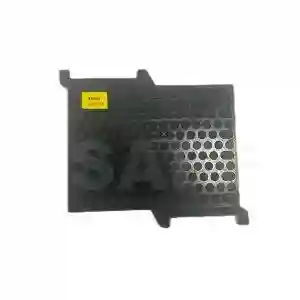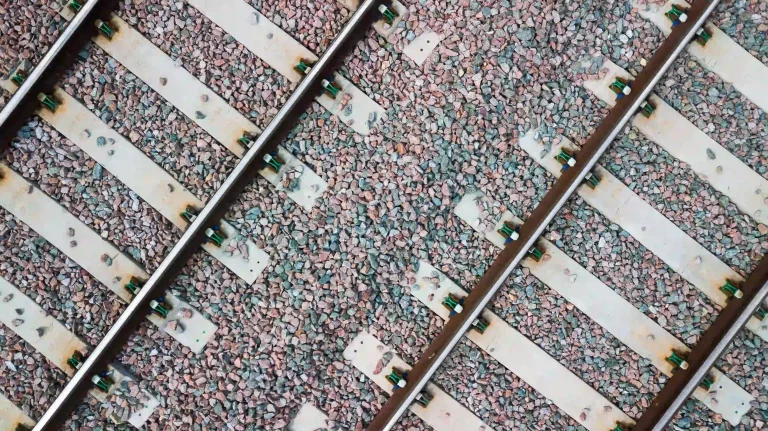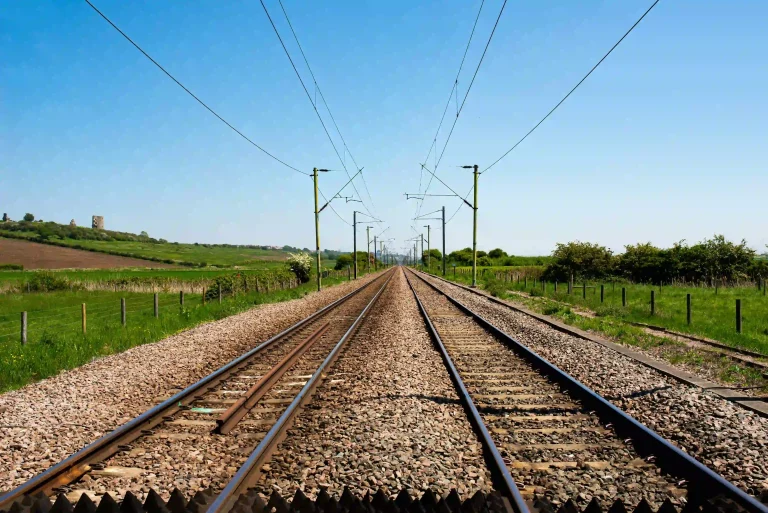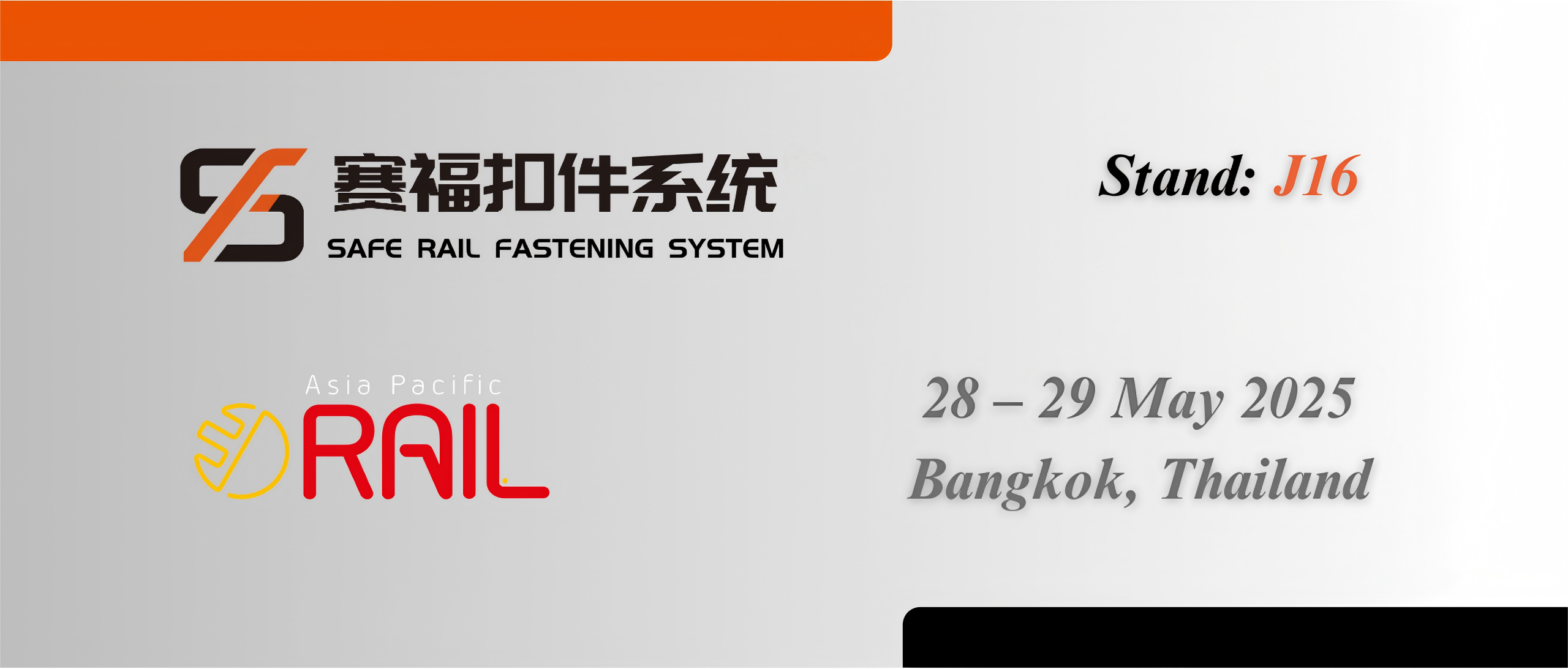Rail pads play a role in railway systems by enhancing track performance and durability. They help minimize vibrations and noise while evenly distributing loads across sleepers. These pads play a role in improving track stability and lowering maintenance expenses, resulting in more effective and safer railway operations. This blog will delve into the purposes and advantages of rail pads.
What Are the Primary Functions of Rail Pads?
Rail pads play a role in the smooth operation and durability of railway systems by serving various important functions that help improve the efficiency and longevity of rail operations. Having an understanding of these functions is essential for professionals working in the industry to maximize the performance of railway infrastructure.
Vibration Reduction
Rail pads serve a role in mitigating the vibrations produced by moving trains on railway tracks to prevent potential structural harm over time if left unaddressed. The primary function of rail pads is to act as a buffer between the rail and the sleeper to absorb and disperse energy effectively, reducing the effects of vibrations on the overall track infrastructure.
Noise Mitigation
Railway noise is an issue in cities especially because of the loud sounds produced by trains moving on tracks. Rail pads are important for reducing this noise as they help absorb and dampen the sounds made by train wheels on the tracks. These rail pads work by utilizing their material properties to soak up waves and limit how much noise travels through the track system.
Load Distribution
Rail pads also play a role in evenly distributing loads on railway sleepers to avoid concentrated stress points that may cause track deformation or failure by ensuring a consistent surface for load transfer. This even distribution of weight helps in preserving the integrity of the railway system during different operational scenarios.
How Do Rail Pads Enhance Track Stability?
Ensuring the stability of tracks is crucial for effective railway operations, with rail pads playing a significant role in maintaining this stability through different methods.
Improved Track Resilience
Rail pads enhance the durability of railway tracks by creating a connection between the rail and sleeper structure. This flexibility enables movements and adaptations during dynamic loads, leading to decreased strain on track parts and extending their longevity. The improved durability guarantees track stability in intense usage or challenging weather conditions.
Enhanced Safety Features
Ensuring safety is the top priority in railway operations and rail pads play a role in improving safety measures along the track system by minimizing vibrations and noise levels. Beyond that, they also help reduce wear on components like fasteners and bolts which can impact safety if not well maintained. The reliable performance of rail pads is vital, for upholding track safety standards.
In What Ways Do Rail Pads Affect Maintenance Costs?
Railway operators often factor in maintenance costs significantly when planning their budgets as rail pads play a role in impacting these expenses with their functional benefits.
Reduction in Wear and Tear
Rail pads play a role in minimizing wear and tear on railway tracks by absorbing vibrations and distributing loads efficiently. This results in reduced maintenance needs and replacement costs over time for railway operators. The protective function of rail pads helps prolong the lifespan of both rails and sleepers.
Simplified Maintenance Procedures
Rail pads make maintenance easier by keeping the tracks aligned and decreasing wear on the parts involved in train movement. Maintenance tasks become less frequent since there is no need for many adjustments or replacements. This allows maintenance crews to work more efficiently, focusing on preventive actions instead of reactive fixes. This efficiency helps cut operational expenses while maintaining top-notch track performance standards.
Why Choose SAFE as a Reliable Rail Pad Supplier?
Choosing a provider of rail pads plays a key role in ensuring the smooth and secure operation of railway systems. SAFE Rail Fastening System (based in Zhejiang province) emerges as a trusted ally in this domain by providing solutions for different types of rail networks.
Quality Assurance
SAFE demonstrates its dedication to ensuring top-notch quality by following rigorous production guidelines and certification standards in place, operating under a management system that upholds quality and standards of production management standards, including the ISO9001 Quality Management System and the ISO14001 Environmental Management System. The ISO45001 Occupational Health Management System guarantees that each rail pad manufactured adheres to strict quality criteria. These certifications play a role in guaranteeing that every rail pad meets stringent quality standards and provides the necessary reliability and durability required for railway applications.
The company’s commitment to quality is evident in its investment in cutting-edge facilities. Optimally, SAFE has established production lines and testing laboratories equipped with more than 100 different imported automated production and testing tools. This modern infrastructure enables quality monitoring throughout the production process, ensuring thorough quality control from selecting raw materials to final product assessment.
Innovation in Design
At the heart of SAFE’s operations lies a focus on innovation that propels enhancements in rail pad design and capabilities. The company actively partners with institutions to encourage the fusion of industry and academic research efforts and drive forward pioneering developments in railway technology. By collaborating with universities we aim to establish an integration model encompassed by the ‘discipline industry market,’ effectively translating cutting-edge scientific research outcomes into practical market solutions.
SAFE places an emphasis on innovation that is evident in its use of advanced production lines featuring digital CNC-controlled machinery for precise manufacturing purposes. These technological advancements allow SAFE to manufacture rail pads that not only comply with industry norms but also anticipate future requirements to guarantee sustained performance and flexibility in the long run.
Conclusion
Rail pads are crucial for improving railway operations as they help minimize vibrations and noise while also enhancing track stability and reducing maintenance expenses. Opting for a supplier such as SAFE Rail Fastening System (Zhejiang) Co., Ltd. guarantees access to top-notch rail pads that contribute to the effectiveness and safety of railway infrastructure.
FAQs
What materials are typically used in rail pads?
Rail pads are often crafted from substances, like rubber or polyurethane, selected for their capacity to dampen vibrations, minimize noise, and uphold strength across different load scenarios.
How often should rail pads be replaced?
The frequency at which rail pads are replaced is influenced by factors such as how often the track is used and the environmental conditions it faces, alongside how quickly the materials wear out over time. Regular inspections are advised to check their state and decide when it’s time for replacements, to ensure that the track performs at its best.
Can rail pads be customized for specific railway needs?
Certainly! Rail pads have the flexibility to be tailored to suit the needs of various railway systems by adjusting materials or design elements to tackle specific operational obstacles or environmental factors encountered on specific tracks.










